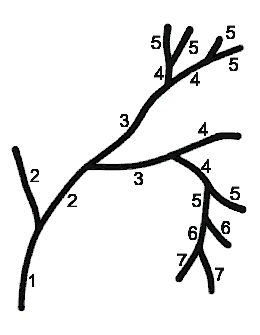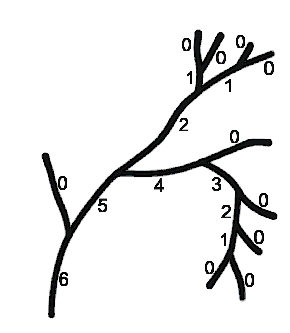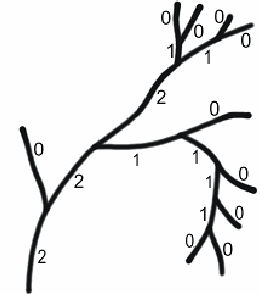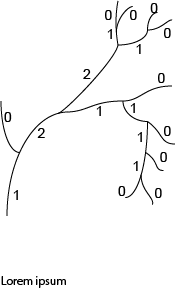A branched structure such as a dendrite is organized in a form known as a tree.
A tree is a connected structure that branches, but has no loops.
Segments, also called branches, are the parts of the tree that connect terminations (endings) or nodes.
One termination is special: the starting point of the tree, called the root.
Dendrites and axons are considered to be rooted trees with an origin at the cell body. A basic understanding of dendrites and axons involves the manner in which they branch.
Numbers are assigned to branches to describe the hierarchy of the branching scheme. The numbering scheme is called the branch order for the tree.
Neurolucida Explorer uses the following Branch Ordering schemes: Centrifugal, Centripetal, Strahler, Terminal Distance, Microvascular Branch, Shaft.
Centrifugal ordering begins at the origin of the tree and works out towards the terminations. Other ordering schemes begin at the terminations and work towards the origin or root of the tree. The Centripetal , Strahler, and Terminal Distance ordering methods begin labeling at the terminations.





